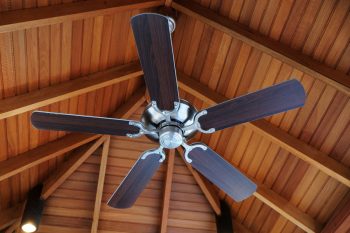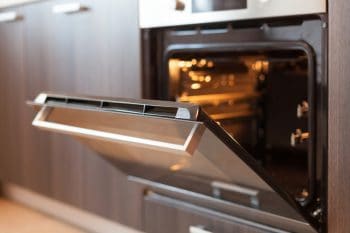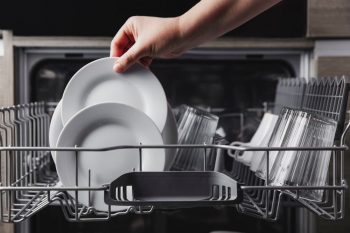
In today’s world, pressure washers are a staple in many households and businesses. They are incredibly convenient tools for cleaning large surfaces and stubborn dirt. However, the key to their effectiveness lies in the pressure washer hose, which carries high-pressure water from the pump to the spray gun.
In this comprehensive guide, we will walk you through the process of making a pressure washer hose from scratch. We will also share some tips on maintenance, troubleshooting, and safety precautions to ensure you get the most out of your self-made pressure washer hose.
To make a pressure washer hose, you need to first choose the right material such as PVC plastic, rubber, or polyurethane. Determine the hose diameter based on your pressure washer’s rating and intended use. Cut the hose to your desired length and attach the appropriate fittings using a crimping machine. Finally, test the hose for leaks and proper functioning before use. Always remember to follow safety precautions when assembling and using a pressure washer hose.
Essential Components of a Pressure Washer Hose
A pressure washer hose typically consists of three layers:
- The Inner Layer: This layer is exposed to the cleaning solvent or water. It is usually made of oil-resistant synthetic rubber, such as neoprene or nitrile blend, which can withstand exposure to various solvents and extreme temperatures.
- The Middle Layer: This layer provides reinforcement to the hose, ensuring it can handle the high pressures generated by the pressure washer. This layer is often made of braided or spiral-wound steel wire, which gives the hose its strength and flexibility.
- The Outer Layer: The outer layer protects the hose from external damage such as abrasion, cuts, and exposure to harsh environments. This layer is typically made of a durable, weather-resistant material like synthetic rubber or thermoplastic.
In addition to these layers, pressure washer hoses also require fittings, couplers, and adapters to connect the hose to the pressure washer and its various components, such as the pump, gun, and nozzle. These fittings must be strong enough to withstand high pressure, firmly connect the parts, and be corrosion-resistant.
Assembling a Pressure Washer Hose: Step-by-Step Guide
- Choose the Right Material: The first step is to choose the right material for your pressure washer hose. PVC plastic, rubber, and polyurethane are common choices, each with its own advantages and disadvantages.
- Determine the Hose Diameter: Common diameters for pressure washer hoses include 1/4″, 5/16″, and 3/8″. The diameter you choose will depend on the pressure rating of your pressure washer and the intended use.
- Cut the Hose: Measure and mark the length you want for your pressure washer hose. Use a hose cutter to make a clean, straight cut at the marked location.
- Attach Fittings: Select the appropriate fittings for your hose and pressure washer model. Insert the fittings into the hose ends and secure them using a crimping machine.
- Test the Hose: Before using your new pressure washer hose, test it for leaks and proper functioning. Connect the hose to your pressure washer and spray gun or nozzle, then turn on the pressure washer and check for any leaks or issues.
Safety Precautions When Assembling and Using a Pressure Washer Hose
Safety is paramount when dealing with high-pressure equipment. Here are some precautions to take:
- Always wear appropriate safety gear, including gloves and eye protection.
- Ensure all connections are secure before using the pressure washer.
- Never aim the pressure washer nozzle at people, animals, or electrical equipment.
- Do not use the pressure washer if the hose is damaged or leaking.
- Always follow the manufacturer’s instructions for your specific pressure washer model.
Troubleshooting Common Pressure Washer Hose Issues
If you encounter any issues with your self-made pressure washer hose, here are some common problems and solutions:
- Leaks: Check for leaks at the connections between the hose and the pressure washer or the spray gun. If any are found, tighten the connections or replace the O-rings.
- Bursts or Cracks: These can occur due to excessive pressure, exposure to extreme temperatures, or general wear and tear. If you find any such issues, consider replacing the hose.
- Low Pressure: Ensure that the water supply valve is fully open and that there are no kinks in the hose. Also, check the inlet filter for any clogs and clean it if necessary.
Maintenance Tips for Your Self-Made Pressure Washer Hose
Proper maintenance is key to ensuring the longevity of your pressure washer hose. Here are some tips:
- Lubricate O-rings regularly.
- Inspect the hose for signs of damage regularly.
- Avoid kinks and sharp edges.
- Handle with care, and never pull on the hose.
- Monitor temperature and pressure, and stay within the operating limits.
- Protect the hose from chemicals and extreme temperatures.
- Store the hose properly in a cool, dry place, away from direct sunlight.
- Replace worn parts as needed.
Conclusion
Making your own pressure washer hose can be a cost-effective and rewarding DIY project. However, it’s important to ensure that your self-made hose can withstand the high pressures and water flow needed for pressure washing tasks. Always follow safety precautions and maintain your hose properly to ensure its longevity and performance. Happy pressure washing!
Frequently Asked Questions
What is the best material for a pressure washer hose?
The best material for a pressure washer hose depends on your specific needs and budget. PVC plastic is a cost-effective option, but it may not be as durable or flexible as other materials. Rubber hoses are highly durable and flexible, but they can be more expensive. Polyurethane hoses are lightweight and resistant to abrasion, but they may not withstand high pressure as well as rubber hoses.
Can I use any type of fittings for my pressure washer hose?
No, you should use fittings that are specifically designed for pressure washer hoses. These fittings are made to withstand the high pressure of the water flow and securely connect the hose to the pressure washer and its components. The fittings should also be corrosion-resistant to prevent damage from water and cleaning solvents.
How often should I inspect my pressure washer hose for signs of damage?
You should inspect your pressure washer hose for signs of damage before and after each use. Regular inspections can help you identify and address any issues early, preventing further damage and potential safety risks.
Can I repair a damaged pressure washer hose?
Yes, minor damage to a pressure washer hose, such as small leaks or cracks, can often be repaired. However, if the hose is severely damaged, such as a large crack or burst, it’s safer and more cost-effective to replace the hose.
How should I store my pressure washer hose?
After use, you should let the hose dry completely before storing it to prevent mildew and other damage. Roll the hose loosely to prevent kinks and store it in a cool, dry place, away from direct sunlight. Avoid hanging the hose from a hook, as this can cause stress and damage to the hose over time.












